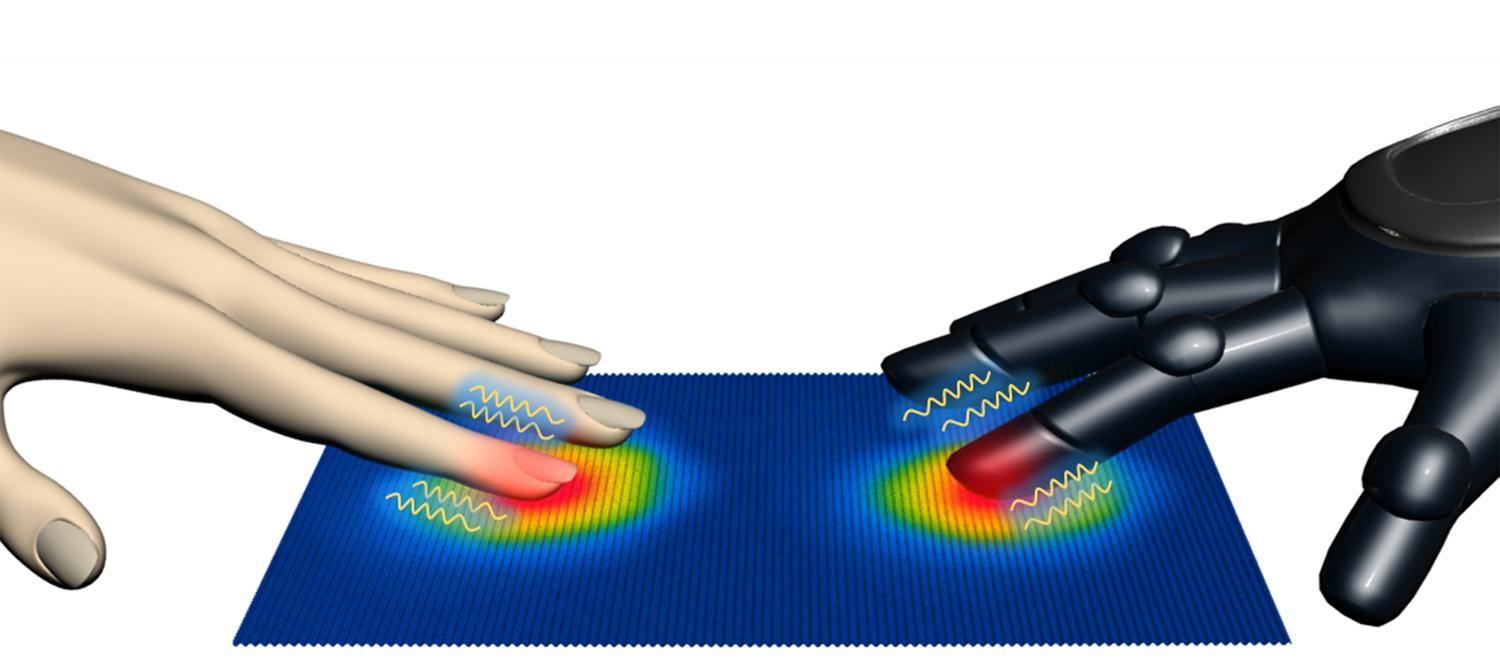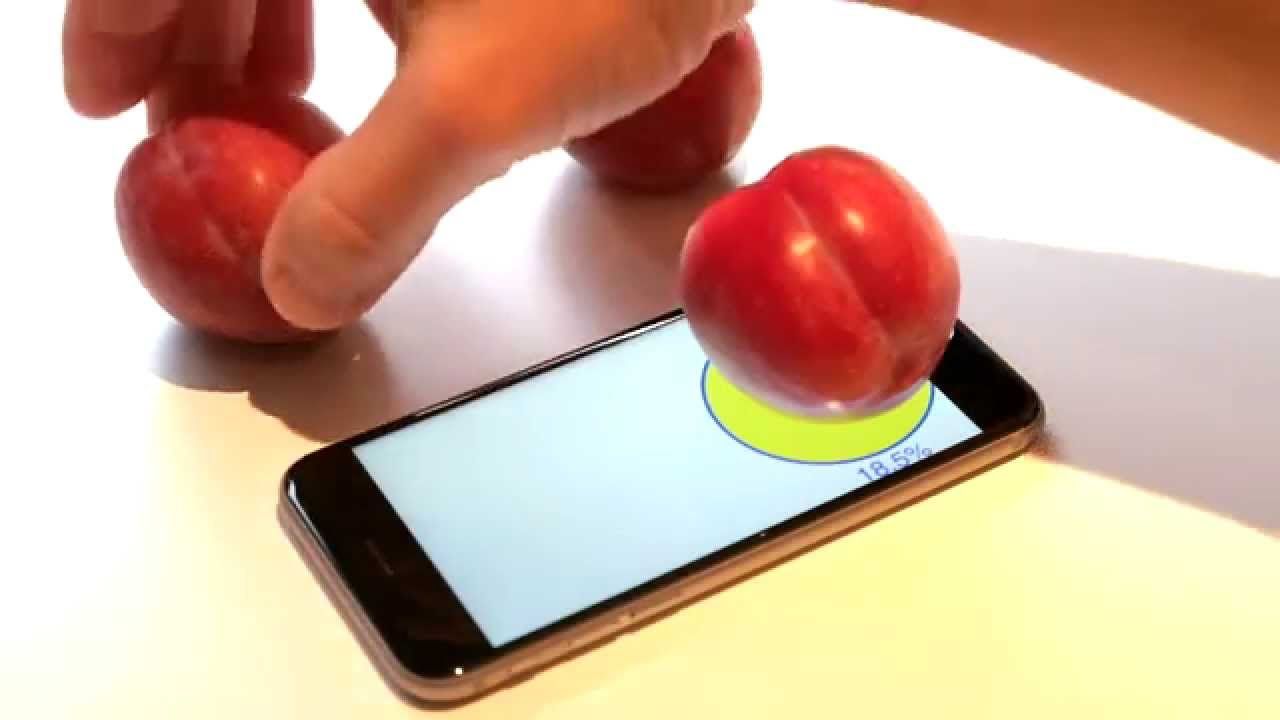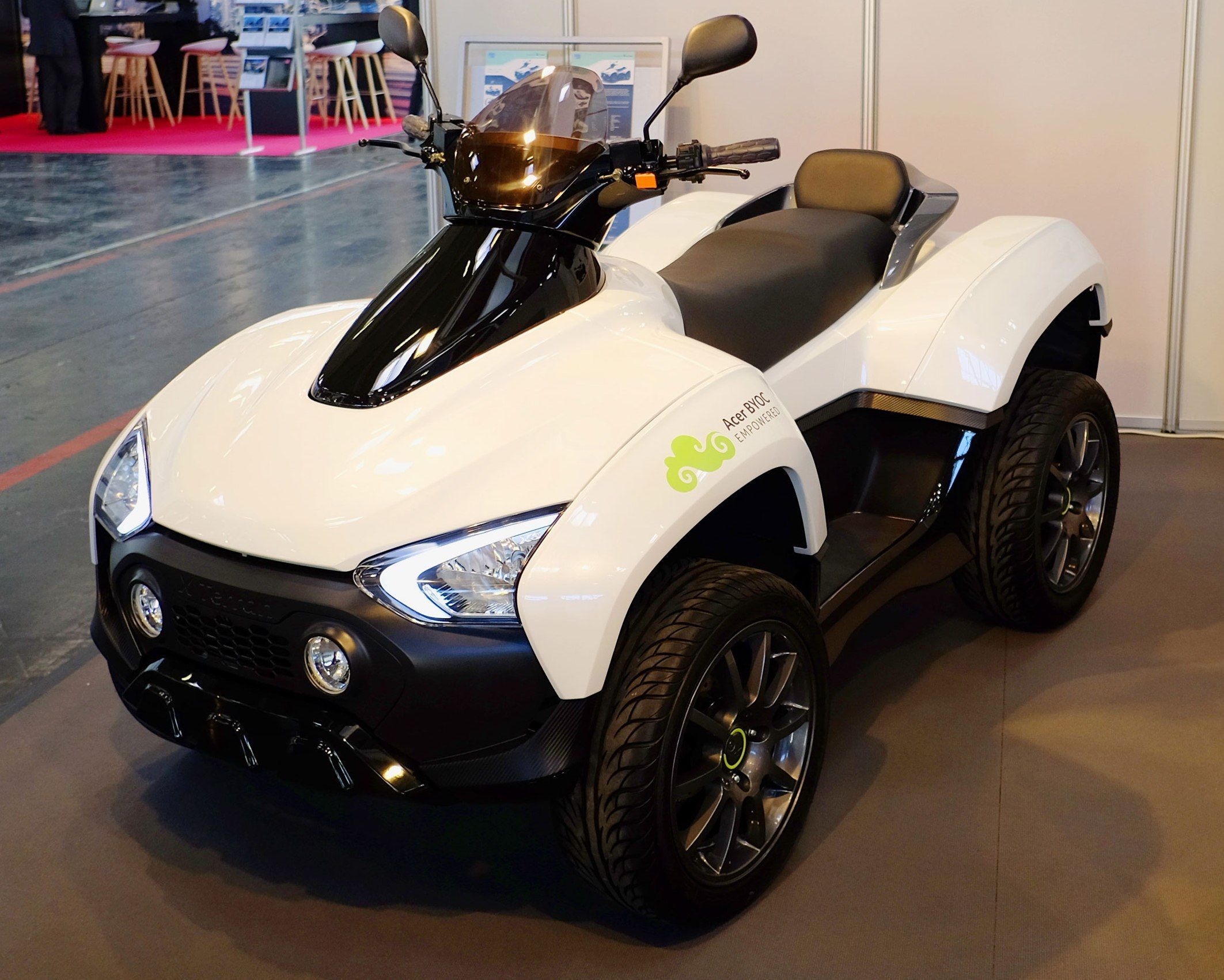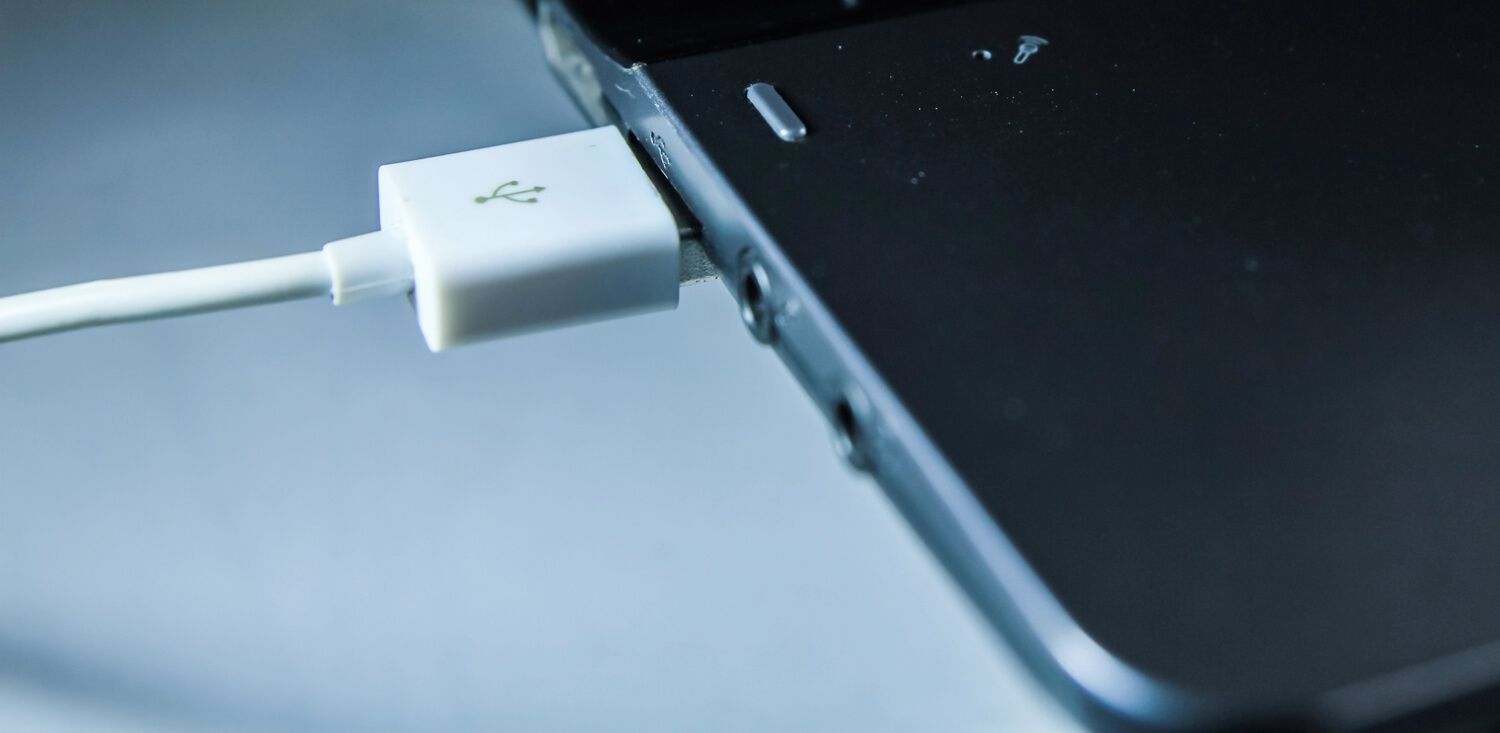A team of researchers with Ulsan National Institute of Science and Technology and Dong-A University, both in South Korea, has developed an artificial skin that can detect both pressure and heat with a high degree of sensitivity, at the same time. In their paper published in the journal Science Advances, the team describes how they created the skin, what they found in testing it and the other types of things it can sense.
Many scientists around the world are working to develop artificial skin, both to benefit robots and human beings who have lost skin sensation or limbs. Such efforts have led to a wide variety of artificial skin types, but until now, none of them have been able to sense both pressure and heat to a high degree, at the same time.
The new artificial skin is a sandwich of materials; at the top there is a flexible surface meant to mimic the human fingerprint (it can sense texture), beneath that sit sensors sandwiched between graphene sheets. The sensors are domed shaped and compress to different degrees when the skin is exposed to different amount of pressure. The compression also causes a small electrical charge to move through the skin, as does heat or sound, which is also transmitted to sensors—the more pressure, heat or sound exerted, the more charge there is—using a computer to measure the charge allows for measuring the degree of sensation “felt.” The ability to sense sound, the team notes, was a bit of a surprise—additional testing showed that the artificial skin was actually better at picking up sound than an iPhone microphone.







